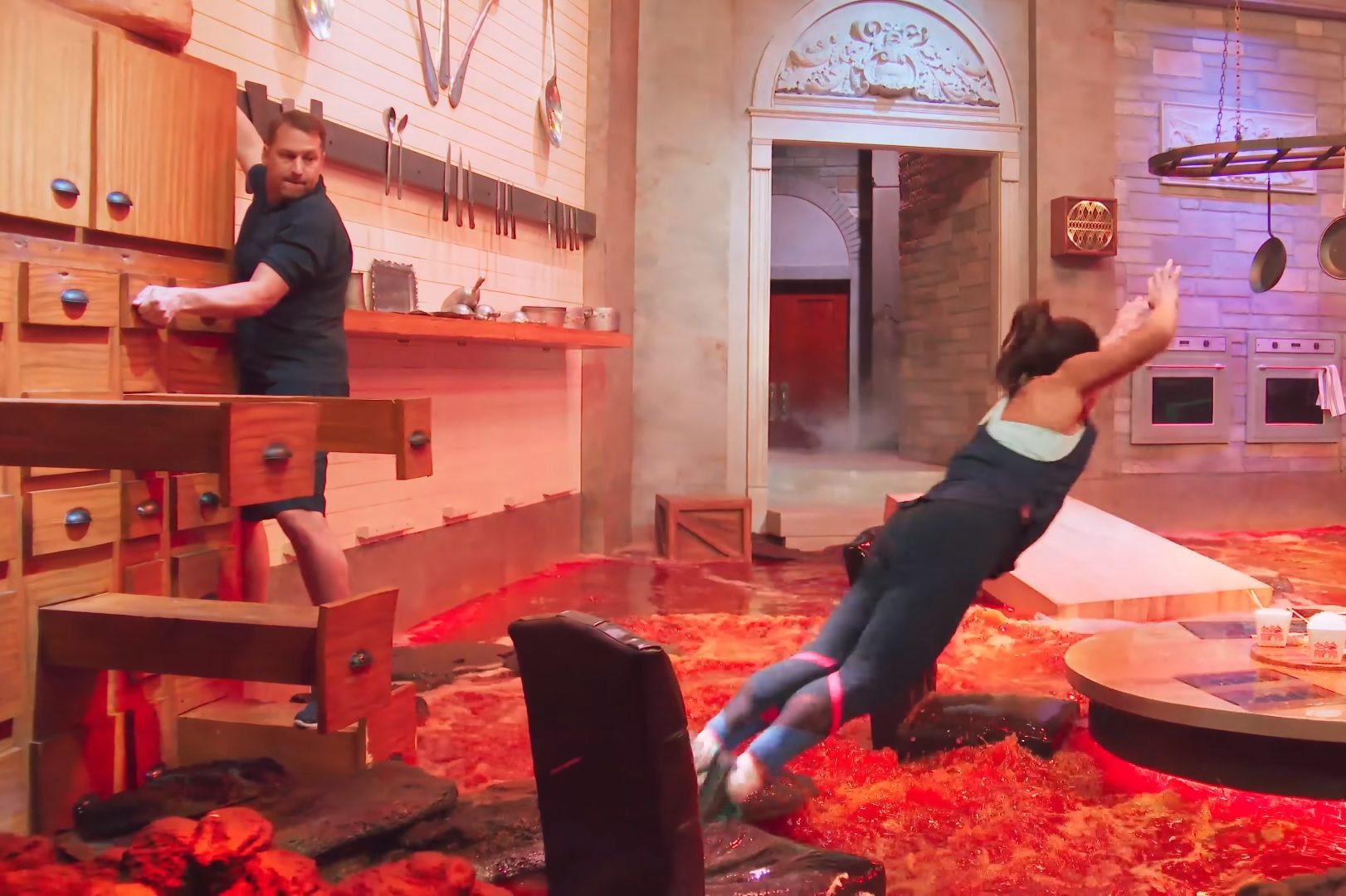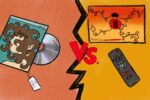Quick! Hop onto some furniture, the floor is lava!
Many of us likely played some version of the game “the floor is lava” as kids. The only rule of the game is what its name suggests: Do not touch the floor because it is lava and you will “die.”
As a 21-year-old, I have not thought about the game for well over a decade. That is, until I was scrolling through Netflix and saw a preview at the top of the page with large, yellow typeface reading “Floor Is Lava.”
The preview showed people jumping from furniture to furniture and even curtain swinging. At first glance, I thought it was silly — what adult signs themselves up to do such things? Then I realized, “I probably would.”
I did not plan on watching all ten episodes, but I ended up doing so, back-to-back, in a single day.
The Netflix-exclusive game show “Floor Is Lava,” named after the aforementioned children’s game, premiered on June 19, 2020. Like the classic game, contestants must use furniture — sometimes in unorthodox style — to avoid touching the ground, or “lava.” Unlike the game of your childhood, however, “Floor Is Lava” utilizes “real” lava — which just looks like thick, bubbling red Kool-Aid. The show is reminiscent of other obstacle-course-based television shows, such as “Wipeout” and “American Ninja Warrior.” “Floor is Lava” is definitely one of strangest new game shows this television season.
The 10-episode series, hosted by NASCAR analyst Rutledge Wood, who mainly appears as a disembodied voice commentating on the action, follows teams of three contestants as they battle through one of five lava-filled rooms. Each room — the basement, the bedroom, the kitchen, the planetarium and the study — is filled with 80,000 gallons of fake lava and is furnished with typical household items common to each respective room, but with a twist. For example, the kitchen is equipped with a climbing wall of kitchen knives and hanging pan racks that double as monkey bars.
It seems that the set designers of the show pay very close attention to detail. Aside from the main obstacles, each room has its own unique elements that bring it to life. The basement is one of the more impressive rooms, boasting mummified alien corpses, a pyramid and some Easter Island head statues placed strategically throughout the course.
The furniture in each room is arranged in such a way that contestants have multiple routes they can go through to reach the exit. In popular escape-room fashion, there are secret items — staffs, keys, ropes and buttons — which they can use to unlock more ways to win. One room, for example, had a rope that, after being pulled, revealed a cargo net that contestants must climb to escape.
Each contestant’s goal is not only to avoid falling into the lava, but to reach the exit on the opposite side of the room. The three teams of three competitors must work in cooperation to achieve this, and points are given to each person who crosses the finish line. In cases of teams tying with one another, the winner is determined by who had the fastest course time. The grand prize is $10,000 and a Volcano of Victory (it’s just a lava lamp).
“Floor is Lava” is split into two “levels,” with the first level involving the rules summarized above. The second “level,” however, adds some extra challenges for the contestants, making it harder for them to cross the finish line. While the first half of the series gives teams secret items to help them win, level two ups the ante by having some of the items create disadvantages. In one instance, a rope that was previously used to form a new path in level one would instead cause an eruption in level two, making all of the furniture more slippery.
While it is fun to watch people fall off of obstacle courses while thinking to yourself, “I can do way much better than this,” the show does get repetitive after a few episodes. Each episode is more or less the same, with very little variation to make them unique.
Before each team’s run across the course, there is an awkward two- to three-minute introduction of the contestants, some of which sounds very corny and scripted. It makes some sense in that it gives viewers a sense of each contestant’s personality, but after a winning team is crowned and the episode ends, that is the last time we see them. Each episode is roughly 30 minutes, but they could be significantly shorter if the teams made only short appearances and the filler scenes were avoided.
The best part of the show is when contestants plunge into the pseudo-magma. They fully submerge beneath the bright-red mysterious liquid and don’t come up, as if they have fallen into real lava. The show then cuts to the remaining team members dramatically yelling “NOO!” as if they have just witnessed their teammate’s actual death. Not once do viewers see any fallen teammates emerge up from the lava — bringing more humor to an already silly show.
The show gets inconsistent after the first half of the season; in some episodes, only two teams competed against one another, and one episode had two teams of two players rather than three.
If “Floor is Lava” is renewed for a second season, it could borrow the approach used by its predecessor “Wipeout,” in which each team has to go through multiple rooms in a tournament-style competition, with only one winner per season. That way, viewers could get more invested in the teams rather than just seeing three new teams every single episode.
“Floor is Lava” does have its flaws, but so do many new shows. It makes for fun television for the whole family to watch. Who knows, it might even inspire viewers to start a game of “the floor is lava,” minus the $10,000 cash prize.
I could have stopped watching after the first few episodes, but for some reason, I could not keep my eyes away from the screen. With several tweaks, the series could have the potential to become as popular as its gimmicky obstacle-course predecessors.
Without a doubt, the show is certainly enjoyable to watch. Maybe it’s because we’re all stuck at home and running out of things to watch — or maybe we just like watching people flop around oversized furniture and plunge into fake lava.

















